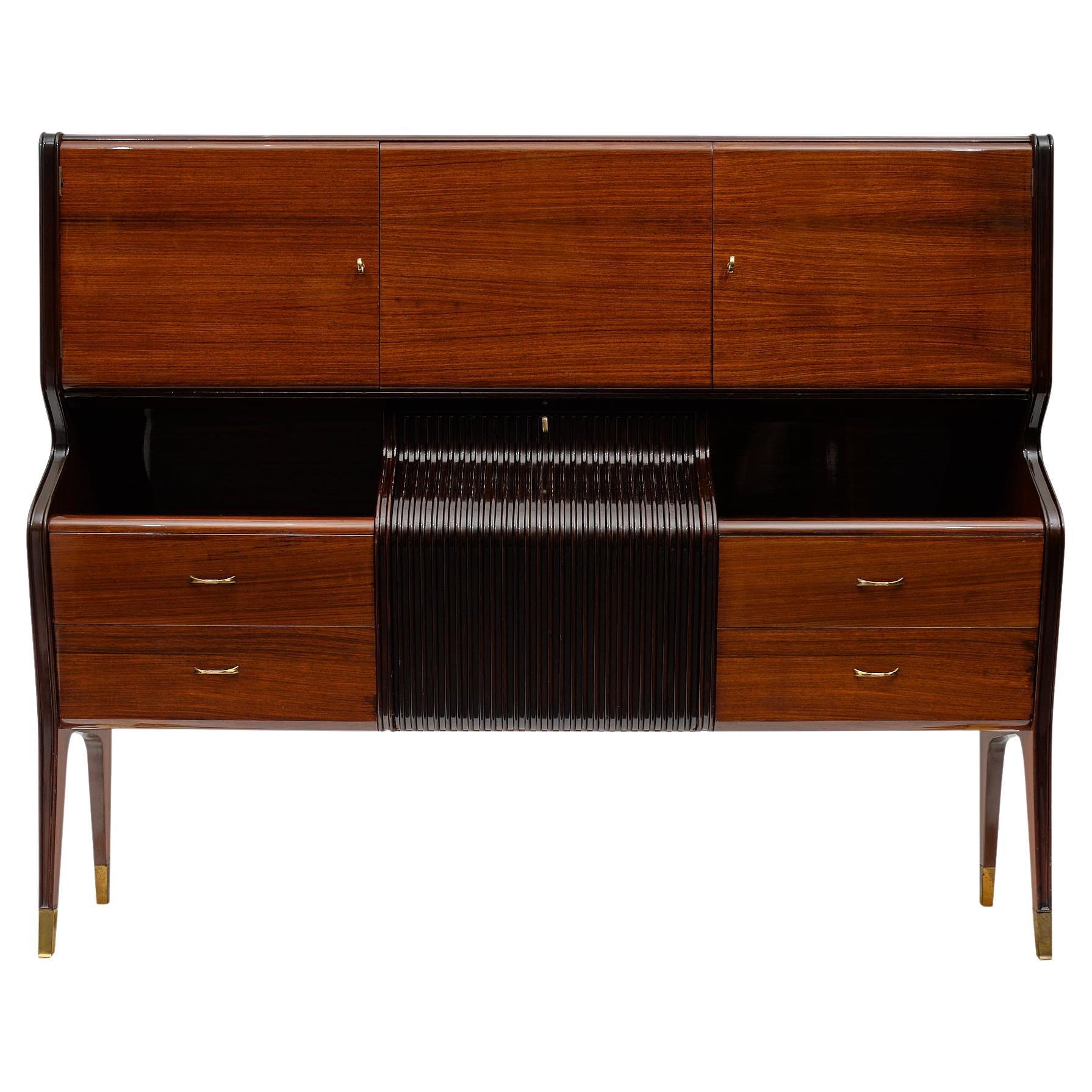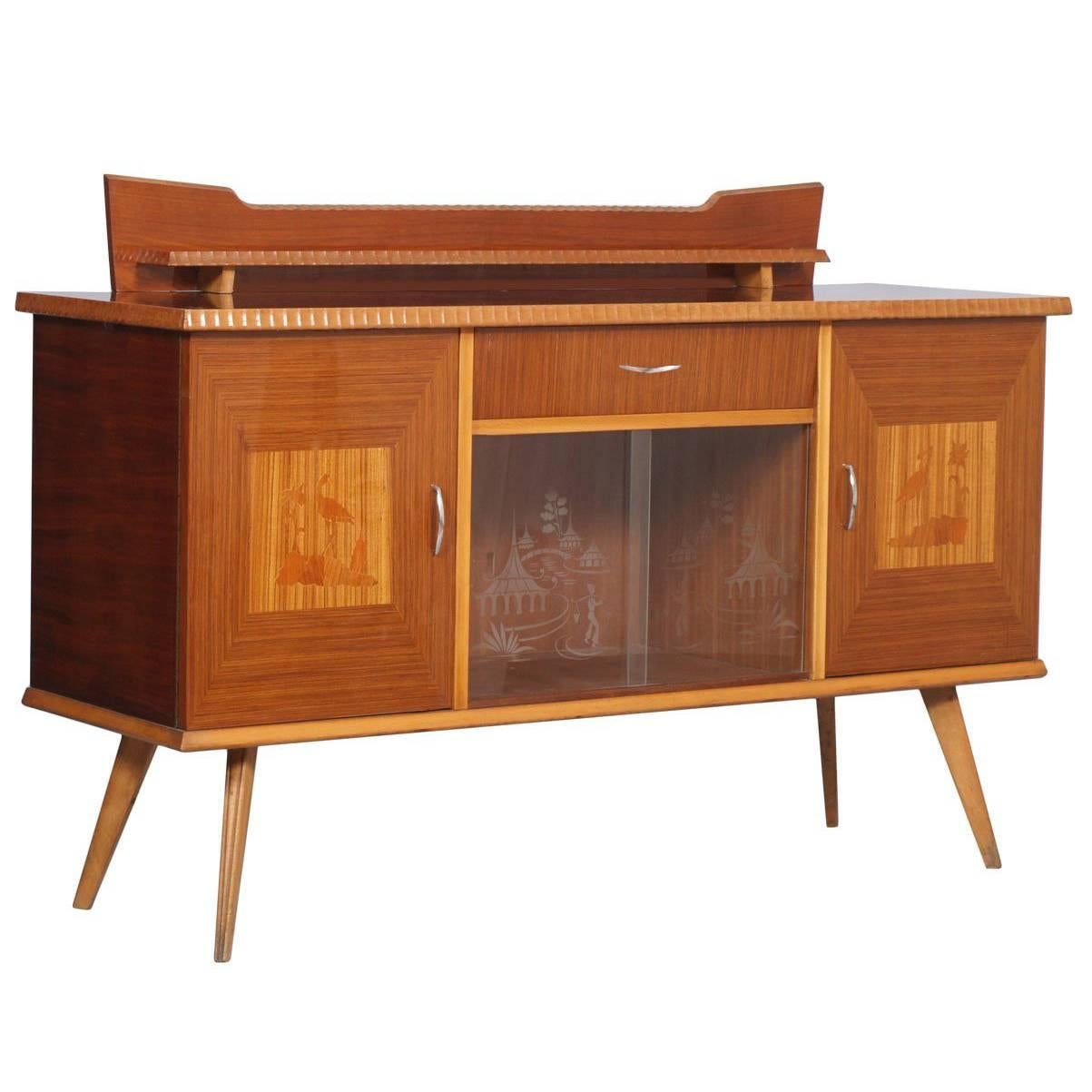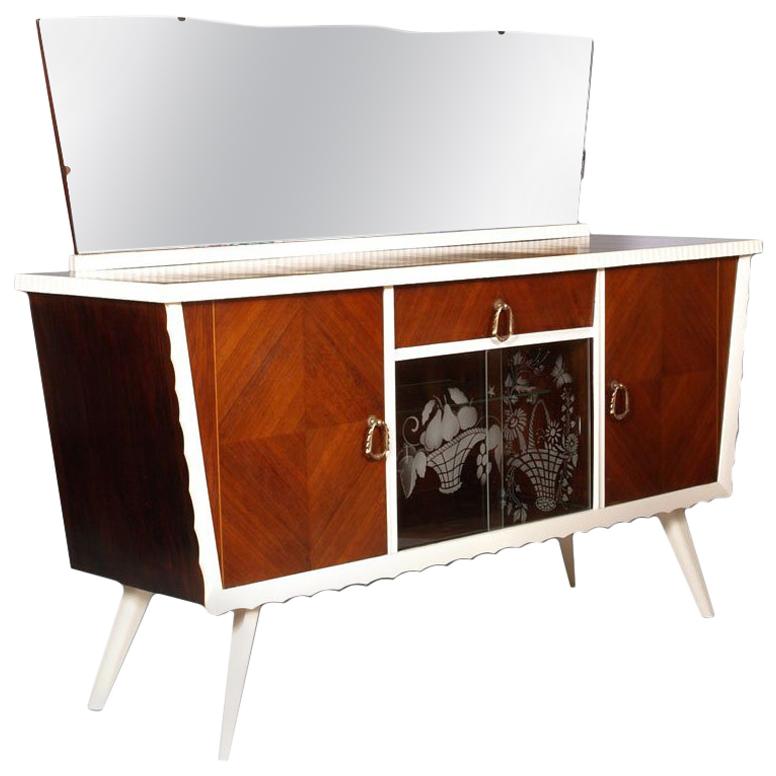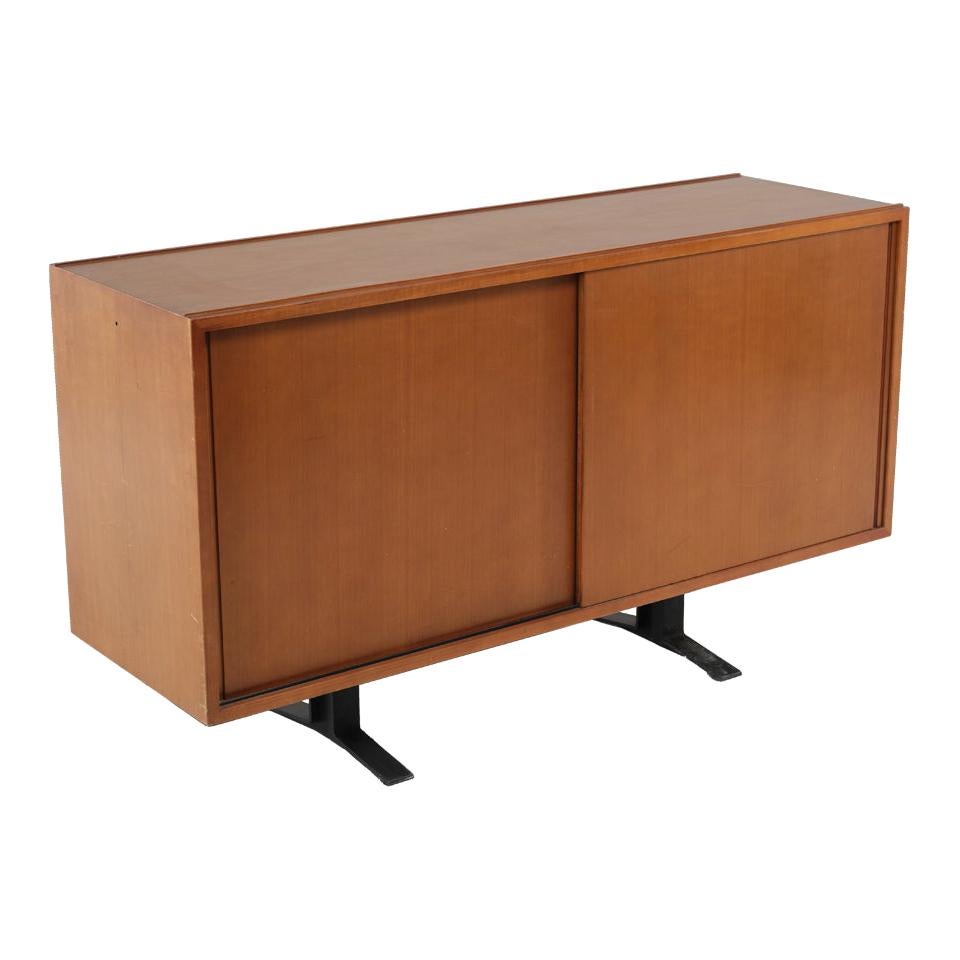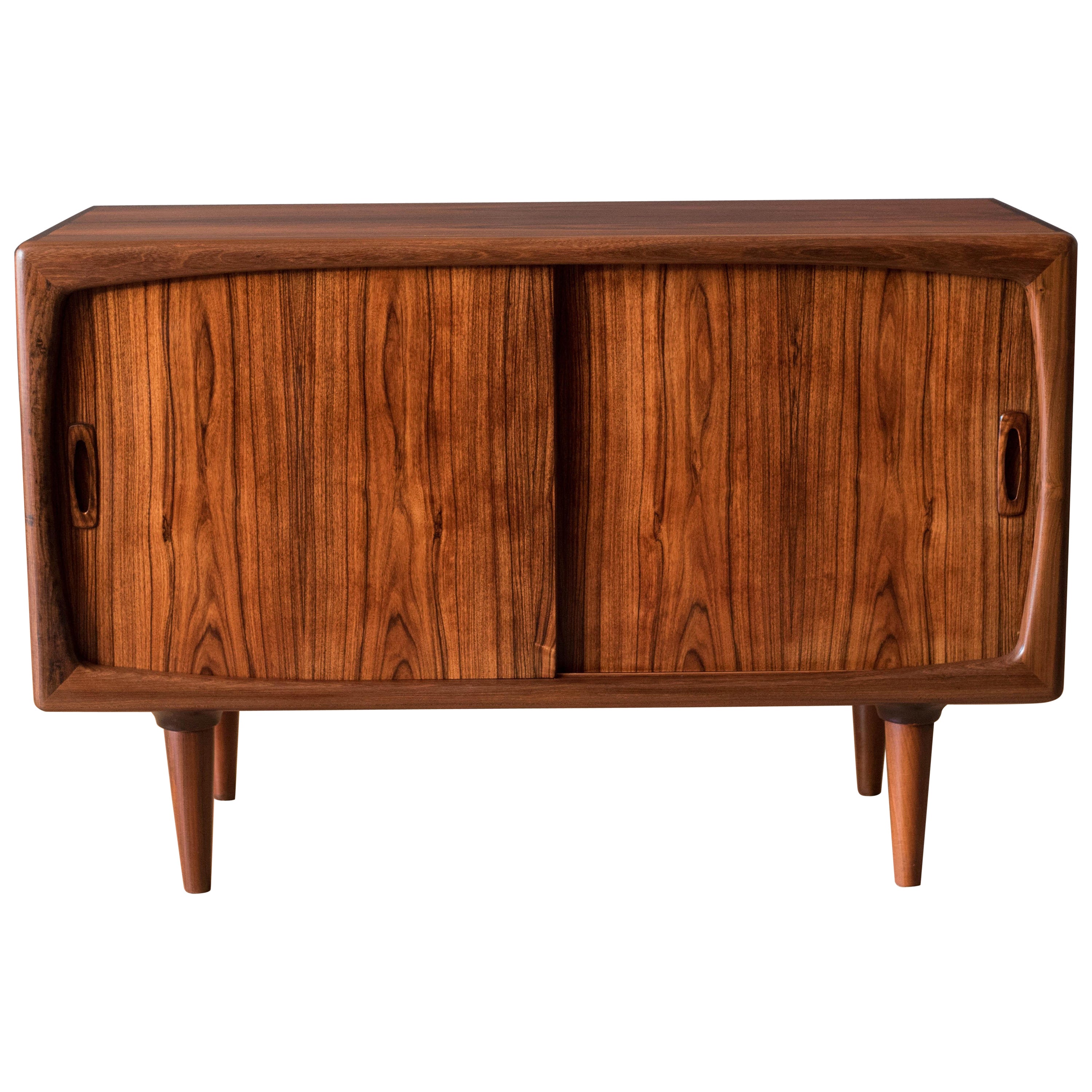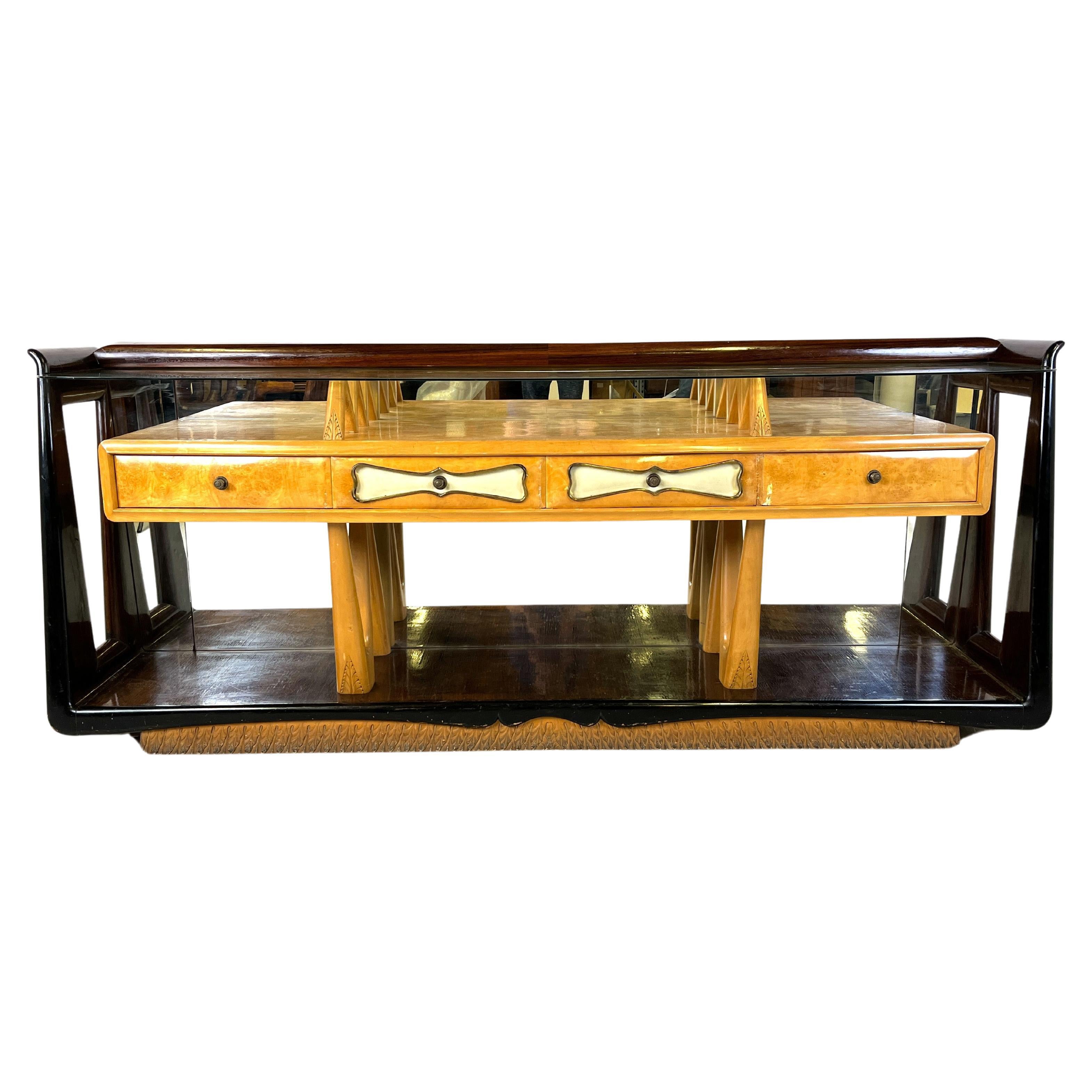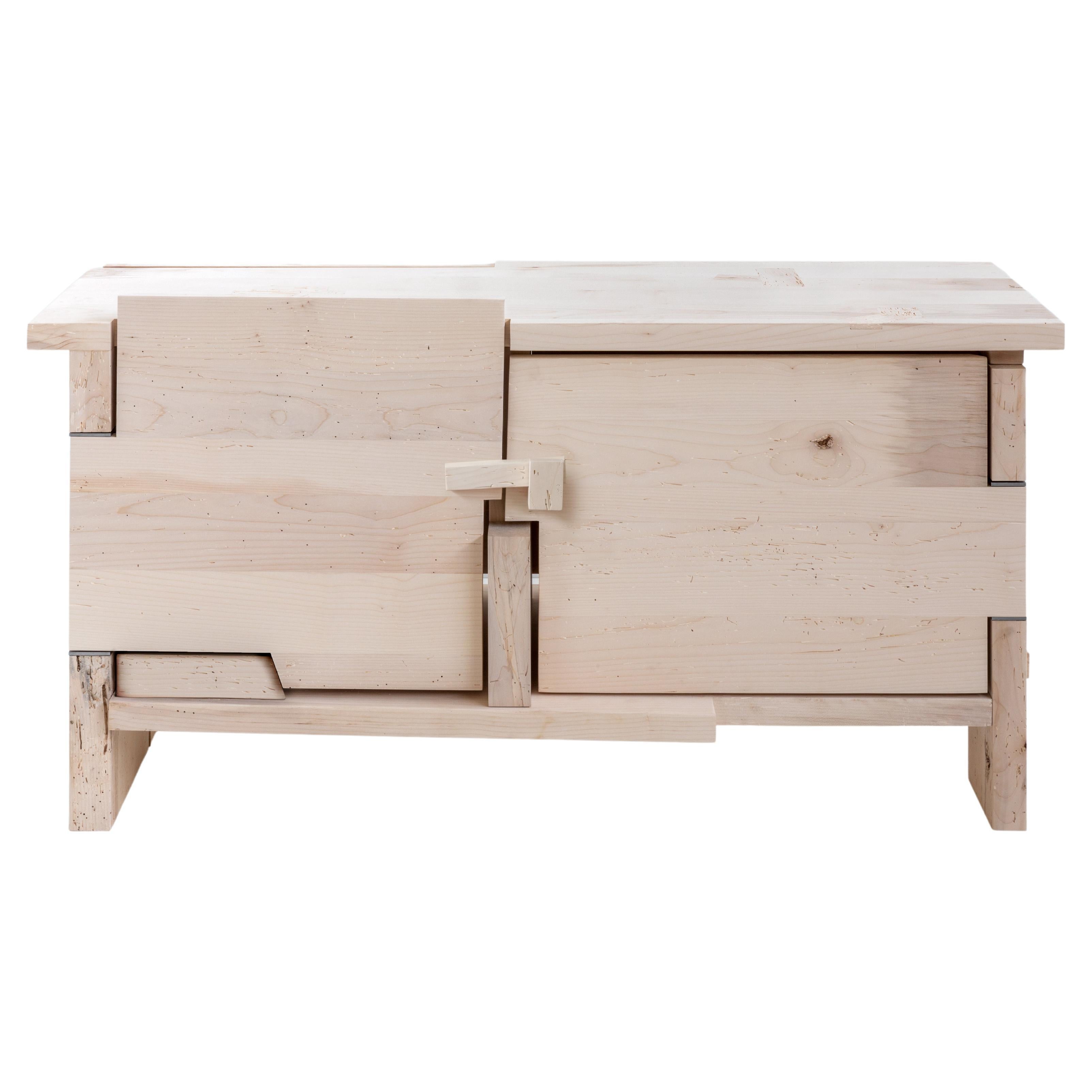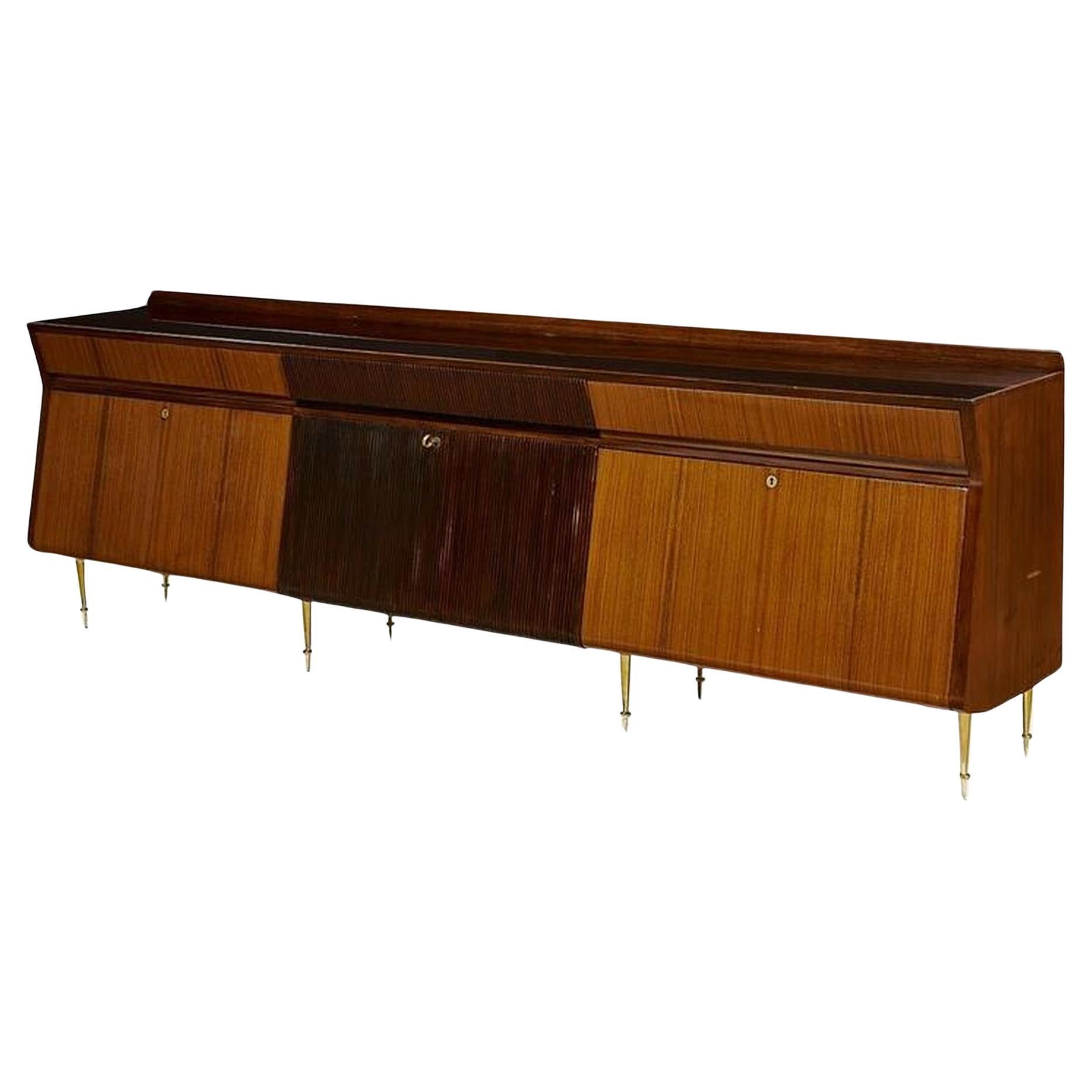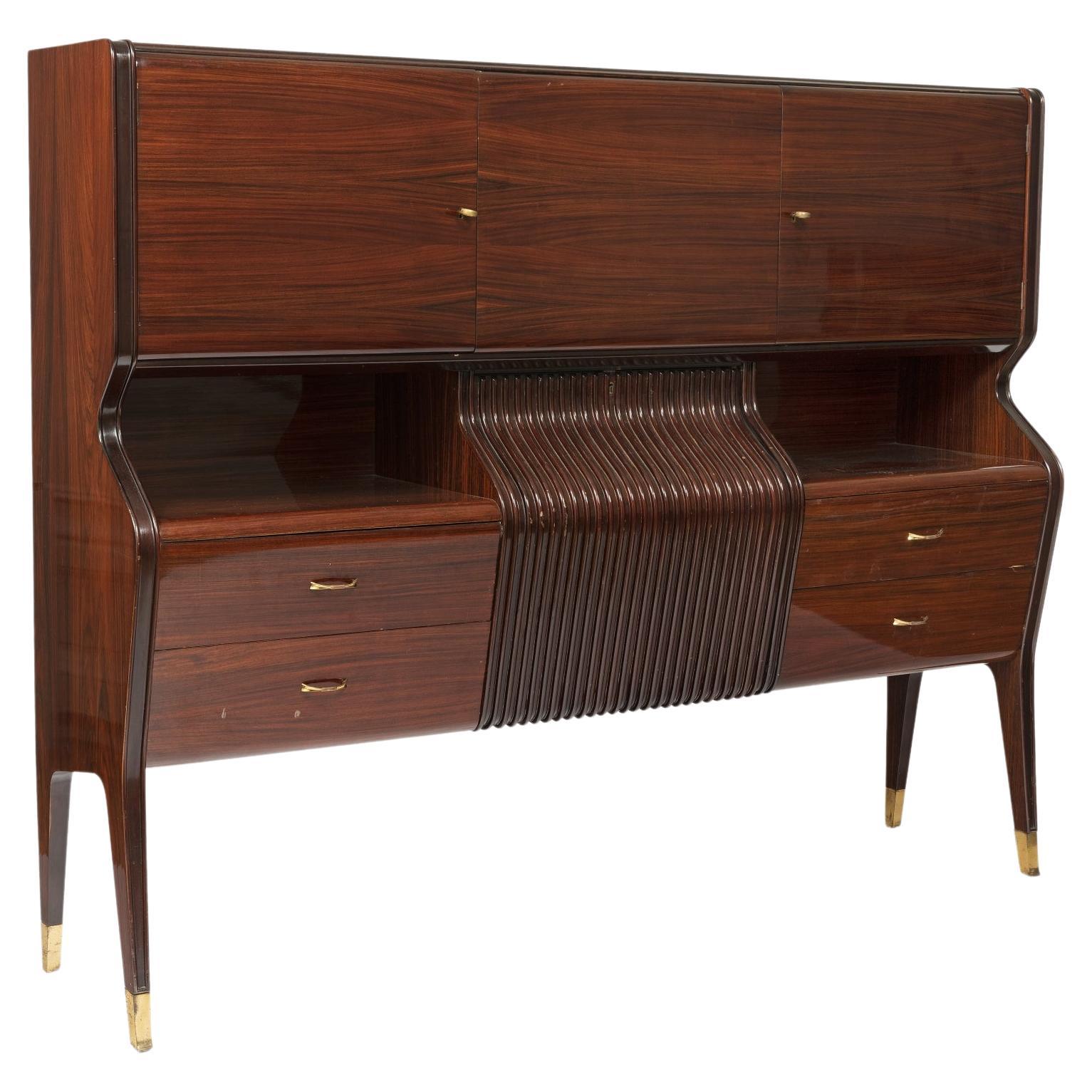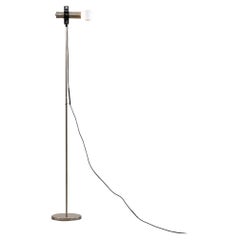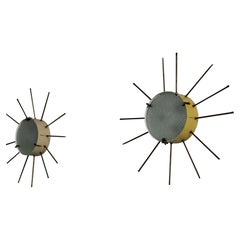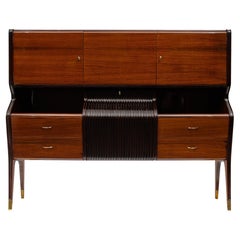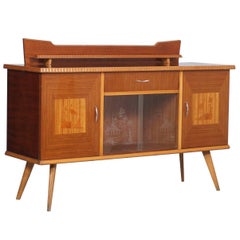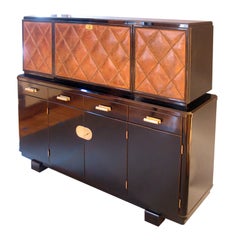
Osvaldo Borsani Indian Rosewood and Maple Counter Buffet Borsani Arredamento
View Similar Items
Osvaldo Borsani Indian Rosewood and Maple Counter Buffet Borsani Arredamento
About the Item
- Creator:Osvaldo Borsani (Designer)
- Dimensions:Height: 57.49 in (146 cm)Width: 70.87 in (180 cm)Depth: 17.33 in (44 cm)
- Style:Mid-Century Modern (Of the Period)
- Materials and Techniques:
- Place of Origin:
- Period:
- Date of Manufacture:1940
- Condition:Wear consistent with age and use. Minor losses.
- Seller Location:Montecatini Terme, IT
- Reference Number:1stDibs: LU5304219347901
Osvaldo Borsani
With his stylish and technically innovative furniture, Osvaldo Borsani helped change the face of Italian design in the 1950s and ’60s. His sofas and chairs, featuring deeply upholstered seating and adjustable position settings, have an aura of optimism and efficiency that still seems fresh and lively today.
Born in the commune of Varedo in northern Italy’s Lombardy region, Borsani studied at the Brera Academy in Milan — the same school attended by such luminaries as designer Piero Fornasetti and artist Lucio Fontana — as well as the Polytechnic University of Milan. Borsani first worked for his father’s furniture-making firm, Arredamenti Borsani, an atelier influenced by the more expressive and curvaceous wing of Art Deco design.
By 1953, when, along with his twin brother, Fulgenzio — the pair also created this visionary mid-century villa — Borsani opened the furniture company Tecno, his design sensibilities had evolved toward furnishings with strong, simple forms enhanced by mechanical innovations, as with the P40 adjustable armchair (1953). Borsani would be the firm’s lead designer for 30 years, while fostering work by Vico Magistretti, Carlo di Carli, Robin Day and others.
Similar to Gio Ponti in the earliest years of his career, Borsani first created designs marked by lush and buoyant lines: tables with voluptuous curved legs, sofas with undulating backrests. But Borsani’s best-known and most novel pieces date from Tecno’s initial furniture lines: the adjustable D70 sofa, which folds open to make a daybed, and the P40 recliner. The latter — now included in the collections of the Museum of Modern Art and the Victoria & Albert Museum — is an articulated lounger with a back, seat and leg rest that can be moved into 486 different positions. Not only is it extremely comfortable, it is also enduringly chic.
Find a collection of vintage Osvaldo Borsani tables, dining chairs and other furniture on 1stDibs.
- Pier Luigi Colli Large Sideboard in Wood with Drawers Italian Manufacturer 1930sBy Pier Luigi ColliLocated in Montecatini Terme, ITLarge sideboard is entirely realized in oak wood, with four drawers on each side (for a total of eight drawers) and a central storage unit. Designed by Pier Luigi Colli Italian Manufacture from 1938 ca. To reconstruct the story of Pier Luigi Colli, we must take a leap back to the 19th century in Turin, a multifaceted city, in some ways controversial due to its austere and sometimes introverted character, but at the core of a creative drive: and if it is primarily known for its automobile industry, there was a time when Turin was at the height of fame also in the field of furniture and embroidery, thanks to the presence of two entrepreneurial realities. On the one hand there was the MIRAM (Italian Hand-Made Embroidery Manufacture) founded by Pietro Colli in 1850, specializing in gobelin fabrics and bandera embroideries. His daughter Teresa traveled between Italy and Paris to discover the latest trends in fabrics and embroidery, while her younger brother, Pier Luigi Colli (1895-1968), the star of this story, joined the company in 1921. Distinguishing himself for his enterprising personality and willing to continue his father's profession, Pier Luigi was known to his contemporaries as "the artist interior designer", and had no doubts about his future: he moved temporarily to Paris, where he attended L'Ecole des Beaux Arts Décoratives. The other great Turin manufacturer to be mentioned is Martinotti, founded in 1931 by Giuseppe Martinotti and supplier of fine furnishings for the Savoy court, pieces which were characterized by a typically 19th century eclectic style, generally made of exotic woods featuring ivory and tortoiseshell inlays: at that time, Martinotti represented the top of internationality, having even participated in the 1875 Philadelphia exhibition! The two brands' fate merged in 1902, a decisive year for Turin which, hosting the International Exhibition of Modern Decorative Art, became the cradle of the spread of the Liberty style in Italy. In the exhibition, Martinotti exhibited an elegant interior, in which all the textile parts, from the curtains to the seat upholstery, was made by Colli. It was in 1926 that Colli (MIRAM) finally acquired Martinotti, founding a laboratory where, from the savoir faire of the two companies, complete pieces of furniture were created and tailor-made for the customer, from the structure to its upholstery. Meanwhile, Pier Luigi Colli was living in Paris, the ideal place to be in 1925, when the International Exhibition of Modern Decorative and Industrial Arts brought him closer to the work of one of his putative fathers, the great French cabinet maker Jacques-Émile Ruhlmann (Paris, 1879 - 1933). Thanks to Paris, Pier Luigi intertwined contacts with the international beau monde, he started to import Lalique glass from France, while the Colli's clientele expanded and special commissions arrived, such as the creation of the Royal Train of the Savoy family made with Fiat, or the lecture hall in the University of Turin. The success of a brand is also measured by its openness to establishing collaborations with the great designers of its time, in the case of Colli resulting in important creative partnerships: from Gio Ponti, who relied on the brand for his Richard Ginori project in Rome, up to Carlo Mollino, who created with Colli the handrails of the RAI (national TV) auditorium and the windows of the Teatro Regio in Turin; also in Turin, the Morbelli architects collaborated with Colli for the furnishings of the RAI skyscraper, and the architects Gabetti Isola for the interiors of the Stock Exchange in Turin. In the 40s and 50s, having opened a branch in Rome, Colli was at the peak of productivity. The embroidery and textile section continued to be one of its strengths, keeping alive the relations with France and its great masters: among the inspirations were the geometric shapes of the fabrics of Ruhlmann's interiors, or the tactile carpets made by designer Mariod Dorn. And so, another Colli trademark become the "textured carpet...Category
Vintage 1930s Italian Mid-Century Modern Sideboards
MaterialsWood, Oak
- Angelo Ostuni and Renato Forti 399 Floor Lamp in Metal and Iron by Oluce 1960sBy Oluce, Angelo Ostuni, Renato FortiLocated in Montecatini Terme, ITFloor lamp model 399 (from cornalux series) with structure in nickel-plated metal, lacquered metal and cast iron. The lamp bulb is adjustable in height achieved by a bracket that allows the lamp to be slid up and down the lamp stem. This lamp was designed by the Italian duo formed by Angelo Ostuni & Renato Forti and manufactured by O-Luce in 1958. Measurements: H 141 x Ø 24 diameter (base 20cm). Founded in 1945 by Giuseppe Ostuni, Oluce is the oldest Italian design company still operating in the lighting world, a unique production excellence which translates passionate aesthetic and technological research into the potential of light into actual form. Over the years, Oluce has succeeded in building a collection structured like a tale, rich and multifaceted, inhabited by products that transcend fashion to become Italian design icons. Its relationship with the design world begins In 1951, Oluce successfully took part in the IX Triennale, presenting – in the lighting section curated by Achille, Livio and Pier Giacomo Castiglioni – a Luminator designed by Franco Buzzi. As was typical at that time, the company instantly gained visibility on the international panorama thanks to Domus magazine. Major success was then reasserted by Tito Agnoli with nominations at the second edition of the Compasso d’Oro awards, in 1955, for his two lamps (the 363 floor lamp and a special bookshelf model). In 1956 these were followed in rapid succession by two more nominations: one for a remarkable table lamp in polyvinyl slats and another for a pendant lamp (mod. 4461) with double perspex shade. Then, there was the noteworthy 255/387 lamp (known as ”Agnoli”), a spot light supported...Category
Vintage 1960s Italian Mid-Century Modern Floor Lamps
MaterialsMetal, Iron
- Set of Two Wall Lamps in Yellow and Beige Lacquered Metal and Glass by G.C.M.EBy G.C.M.ELocated in Montecatini Terme, ITSet of two wall lamps (they can also be used as ceiling lamps as well) with structure in lacquered metal (one is in a beige shade and one is in a brilliant yellow shade) stamped glas...Category
Vintage 1950s Italian Mid-Century Modern Wall Lights and Sconces
MaterialsMetal, Brass
- Two Wall Lamps in Red and Blue Lacquered Metal and Glass by G.C.M.E. 1950s ItalyBy G.C.M.ELocated in Montecatini Terme, ITSet of two wall lamps (they can also be used as ceiling lamps as well) with structure in lacquered metal (one is in a light blue shade and one is in a brilliant red shade) stamped gl...Category
Vintage 1950s Italian Mid-Century Modern Wall Lights and Sconces
MaterialsMetal, Brass
- Two Wall Lamps in Red and Blue Lacquered Metal and Glass by G.C.M.E. 1950s ItalyBy G.C.M.ELocated in Montecatini Terme, ITSet of two wall lamps (they can also be used as ceiling lamps as well) with structure in lacquered metal (one is in a light blue shade and one is in a brilliant red shade) stamped gl...Category
Vintage 1950s Italian Mid-Century Modern Wall Lights and Sconces
MaterialsMetal, Brass
- Ettore Sottsass Canada Armchair in Blue Velvet and Wood Poltronova 1960sBy Ettore Sottsass, PoltronovaLocated in Montecatini Terme, ITCanada settee armchair with a structure in wood, seat and back in padded blue-green velvet. It was designed by Ettore Sottsass Jr in 1959 and produced by the Italian company Poltro...Category
Vintage 1950s Italian Mid-Century Modern Armchairs
MaterialsVelvet, Wood
- Osvaldo Borsani Buffet with BarBy Osvaldo BorsaniLocated in Austin, TXItalian rosewood buffet and bar by Italian designer Osvaldo Borsani. This fine cabinet features a mirrored and tinted glass upper compartment behind folding doors, on the bottom four...Category
Vintage 1960s Italian Mid-Century Modern Buffets
MaterialsGlass, Rosewood
- Mid-Century Modern Melchiorre Bega Style Buffet Beech Rosewood and Inlaid MapleBy Melchiorre BegaLocated in Vigonza, PaduaA Melchiorre Bega per Vittorio Bega e Figli, Mid-Century Modern buffet sideboard credenza with beechwood structure, veneer rosewood and inlaid maple. In very good condition. Measur...Category
Vintage 1940s Italian Mid-Century Modern Buffets
MaterialsBeech, Maple, Rosewood
- Buffet or Bar attributed to Osvaldo BorsaniBy Osvaldo BorsaniLocated in New York, NYVery rare piece by Osvaldo Borsani with original leather and interior pink paint.Category
20th Century Italian Art Deco Buffets
MaterialsBronze
- Midcentury Osvaldo Borsani attributed Credenza Buffet in Walnut and MahoganyBy Osvaldo BorsaniLocated in Vigonza, PaduaMid-Century Modern credenza buffet, in walnut lacquered and mahogany veneer with engraved sliding glass. Circa 1930. Also available without mirror Measure cm: H 85+48, W 160, D 47.Category
Mid-20th Century Italian Mid-Century Modern Buffets
MaterialsGlass, Mahogany, Walnut
- Italian Modernist Buffet in the style of Osvaldo BorsaniBy Osvaldo BorsaniLocated in Austin, TXGrande buffet, credenza, Italian, of rosewood finished in a lustrous French polish, in the style of iconic designer Osvaldo Borsani, the rounded side board boasts five doors opening ...Category
Vintage 1960s Italian Modern Buffets
MaterialsMarble, Brass
- Vintage Restored Solid Maple Heywood Wakefield Wheat Credenza BuffetBy Heywood-Wakefield Co.Located in Chattanooga, TNVersatility abounds with this Heywood Wakefield credenza. Buffet, media cabinet, or entryway console are just a few ideas. As a dry bar, the adjustable / removable shelves will allow you to keep that whiskey collection cozy. The top drawer sports the original felt and dividers that can also be removed to suit your needs. Collectors know that it is difficult to find original Heywood in good condition. The fair color wood typically shows all the flaws of half century of use. You’ll be delighted to know that this credenza has been mostly restored. The Heywood finishes are among the most challenging to replicate. We are pleased to say that we have achieved a a near perfect muted grain and color match to the the original Heywood Wakefield wheat...Category
Vintage 1960s American Mid-Century Modern Credenzas
MaterialsMaple
Recently Viewed
View AllRead More
Mid-Century Master Osvaldo Borsani Gets His Due at Donzella
The New York City gallery has devoted its latest show to the work of the modernist Italian designer.
Peek inside Osvaldo Borsani’s Mod Italian Villa
The iconic mid-century estate outside of Milan opens its doors to the public for a very special homage.
